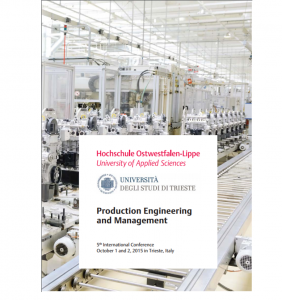E. M. Scheideler, A. Ahlemeyer-Stubbe
Data Mining: A potential detector to find failure in complex components
in Elio Padoano, Franz-Josef Villmer, Proceedings 5 th International Conference
October 1 and 2, 2015 Trieste, Italy Production Engineering and Management, Volume 11/2015 Publication Series in Logistics Department of Production Engineering and Management Ostwestfalen-Lippe University of Applied Sciences, Lemgo (Germany)
Abstract:
This paper is aimed to discuss current research using data mining techniques and industry statistics in production environments. The general research approach is based on the idea of using data mining processes and techniques of industry statistics to find rare and hidden patterns behind failures of complex components.
A case study will be applied to illustrate how the technique is carried out and where the limits of this approach occur. The case study deals with a component supplier of printing machines, which received an increasing number of client complaints, all related to one distinct problem. The observed failures seem to occur only among clients with very high quality standards. The affected component undergoes a very complex production process with several steps in different departments. Every single production unit records data information from multiple process variables and at different points in time. In the beginning there was no understanding of the failure causes in production at all. Therefore a huge amount of production data had to be analyzed to find the pattern that discloses the failure.
The data mining process starts with a first step in which the given data sets are prepared and then cleaned, followed up by building a prediction model. The aim is to detect the root causes for failures and to predict potential failures in affected components.
This paper shows how to use data mining to get the answer on pressing production failures.
Keywords:
Data mining, production failure, multi-variant analysis, multivariate process control, predictive modelling, case study

